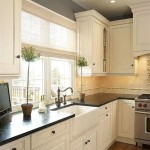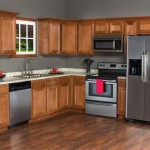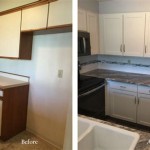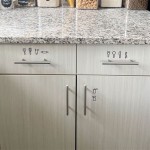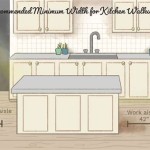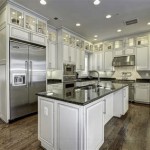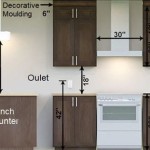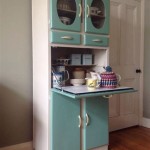Kitchen Cabinets Albany NY: A Comprehensive Guide to Selection and Installation
The selection and installation of kitchen cabinets represents a significant undertaking for homeowners in Albany, NY, demanding careful consideration of various factors including budget, style, functionality, and spatial constraints. Beyond mere storage solutions, kitchen cabinets define the aesthetic character of the space and contribute substantially to its overall value. This article provides a comprehensive overview of the considerations involved in choosing and installing kitchen cabinets in the Albany area, focusing on aspects relevant to the local market.
The Albany, NY housing market features a diverse range of architectural styles, from historic brownstones to modern suburban homes. This diversity necessitates a wide array of cabinet options to complement existing decor and structural elements. Selecting the right cabinets requires a thorough assessment of the kitchen's existing layout, the homeowner's lifestyle, and the anticipated longevity of the investment. Understanding the fundamental types of cabinets available, the materials used in their construction, and the installation process is crucial for a successful kitchen renovation.
Understanding Cabinet Types: Stock, Semi-Custom, and Custom
Kitchen cabinets are broadly categorized into three primary types: stock, semi-custom, and custom. Each type offers a different balance between cost, customization, and lead time, catering to diverse budgetary constraints and design preferences.
Stock cabinets represent the most economical option, typically available in standard sizes, finishes, and door styles. These cabinets are mass-produced and readily available from big box stores and some local retailers in the Albany area. While offering a cost-effective solution, stock cabinets provide limited customization options and may not perfectly fit non-standard kitchen layouts. They are suitable for homeowners seeking a quick and budget-friendly upgrade without extensive design modifications.
Semi-custom cabinets offer a middle ground between stock and custom options. They are available in a wider range of sizes and configurations than stock cabinets, allowing for some degree of customization. Homeowners can often choose from various door styles, finishes, and hardware options, enabling a more personalized design. Semi-custom cabinets typically have a longer lead time than stock cabinets, as they are often made to order based on the homeowner's specifications. This option appeals to those seeking a balance between affordability and design flexibility.
Custom cabinets represent the highest level of personalization and are tailored to the specific dimensions and design preferences of the homeowner. These cabinets are built to order by skilled cabinetmakers or specialized companies, offering unlimited design possibilities. Custom cabinets can accommodate unique kitchen layouts, incorporate bespoke features, and utilize premium materials. While representing the most expensive option, custom cabinets provide unparalleled design flexibility and can significantly enhance the value and appeal of the home. Local Albany cabinetmakers often offer custom solutions that are sensitive to the architectural nuances of older homes in the region.
Material Considerations: Wood, Laminate, and Thermofoil
The materials used in cabinet construction significantly impact their durability, aesthetic appeal, and overall cost. The most common materials include wood, laminate, and thermofoil, each possessing distinct characteristics and advantages.
Wood cabinets are valued for their natural beauty, warmth, and durability. Solid wood cabinets are typically constructed from hardwoods such as maple, oak, cherry, or walnut. These hardwoods offer superior strength and resistance to warping and cracking. However, solid wood cabinets are generally more expensive than other options and require proper sealing and finishing to protect against moisture and temperature fluctuations. Wood veneer cabinets consist of a thin layer of hardwood applied over a core of plywood or particleboard. This construction method offers a similar aesthetic appeal to solid wood at a lower cost, while also providing enhanced stability and resistance to warping. The choice of wood species and finish will influence the overall look and feel of the kitchen.
Laminate cabinets consist of a thin layer of decorative laminate applied over a core of particleboard or MDF (medium-density fiberboard). Laminate cabinets are known for their affordability, durability, and ease of maintenance. They are available in a wide range of colors, patterns, and textures, mimicking the appearance of wood or other materials. Laminate cabinets are resistant to scratches, stains, and moisture, making them a practical choice for busy kitchens. However, laminate cabinets are generally less resistant to heat than wood cabinets and may be susceptible to damage from prolonged exposure to high temperatures. The quality of the laminate and the edging technique used in its application are crucial factors in determining the longevity and appearance of laminate cabinets.
Thermofoil cabinets consist of a thin layer of vinyl applied over a core of MDF. Thermofoil cabinets are similar to laminate cabinets in terms of cost and durability. They are available in a variety of colors and styles, including seamless designs that eliminate visible seams and edges. Thermofoil cabinets are resistant to moisture and are easy to clean, making them a popular choice for contemporary kitchens. However, thermofoil cabinets can be susceptible to heat damage and peeling, particularly around appliances and areas exposed to direct sunlight. The quality of the thermofoil and the application process are critical factors in determining the durability and appearance of thermofoil cabinets. Homeowners in Albany should be aware of the potential for temperature fluctuations when considering thermofoil cabinets, particularly in older homes with less efficient insulation.
Navigating the Installation Process: DIY vs. Professional Installation
The installation of kitchen cabinets is a critical step in the renovation process, impacting both the functionality and aesthetics of the finished kitchen. Homeowners can choose to install cabinets themselves (DIY) or hire a professional installer. Each option has its own advantages and disadvantages, depending on the homeowner's skills, experience, and available time.
DIY cabinet installation can save money on labor costs, but it requires a high level of skill, precision, and attention to detail. Homeowners must possess a thorough understanding of carpentry techniques, plumbing, and electrical systems to ensure a safe and successful installation. It is crucial to accurately measure the kitchen space, level the cabinets, and properly connect plumbing and electrical fixtures. Errors in installation can lead to functional problems, aesthetic imperfections, and potential safety hazards. DIY installation is generally best suited for homeowners with extensive construction experience and a willingness to invest the time and effort required for a professional-quality result.
Professional cabinet installation offers several advantages over DIY installation. Professional installers have the experience, expertise, and specialized tools necessary to ensure a precise and efficient installation. They can handle complex kitchen layouts, address unexpected challenges, and ensure that the cabinets are properly leveled, aligned, and secured. Professional installers also provide warranties on their workmanship, offering peace of mind to homeowners. While professional installation incurs additional labor costs, it can ultimately save time, reduce stress, and ensure a high-quality finished product. When selecting a professional installer in the Albany area, it is important to check their credentials, insurance, and references to ensure that they are qualified and reputable.
Beyond the core cabinet installation, consider additional elements that impact the overall kitchen design. Countertops, backsplashes, hardware (knobs, pulls, hinges), and lighting all contribute to the final aesthetic and functionality. Selecting these elements in coordination with the cabinet style and finish will create a cohesive and visually appealing space.
The Albany, NY area offers a range of cabinet suppliers and installers. Researching local businesses, obtaining multiple quotes, and reviewing customer testimonials are essential steps in finding the best fit for your project and budget. Consider visiting local kitchen showrooms to view cabinet options firsthand and discuss your design ideas with professionals.
In conclusion, selecting and installing kitchen cabinets in Albany, NY, requires careful planning, informed decision-making, and a thorough understanding of the available options. By considering cabinet types, material choices, and installation methods, homeowners can create a functional and aesthetically pleasing kitchen that enhances the value and enjoyment of their home.

Kitchen Cabinets Albany Ny

Kitchen Cabinets Albany Ny

Custom Kitchen Cabinets Albany Ny Contractor Saratoga 10 Day Solutions New York

Troy And Albany Ny Kitchen Design

Kitchen And Bathroom Design Capitol Kitchens Baths

Kitchen Showroom Albany Ny Curtis Lumber Delmar

Kitchen Showroom Albany Ny Curtis Lumber Delmar

Kitchen Cabinets Albany Ny

Troy And Albany Ny Kitchen Design

Letting In The Light Albany Ny Bennett Contracting
Related Posts

